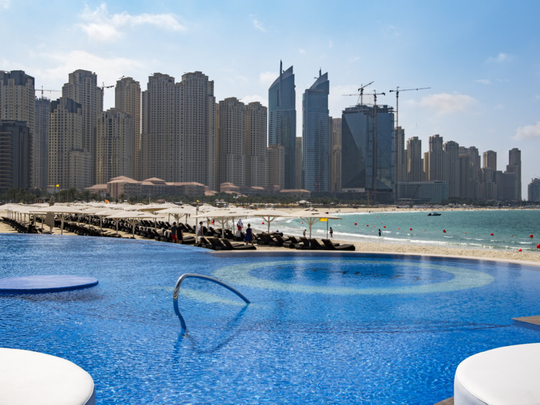
Dubai: Dubai is becoming slightly less expensive for global businesses. The cost of office and residential per employee dropped 12 per cent to an average of $51,300 (Dh188,424) in 2016, according to a new Savills’ listing of what it costs multinationals in global cities.
Right through last, there was rental softening in key Dubai locations where multinationals typically prefer to have their offices and where their employees are likely to take up accommodation. And that came on top of slight dips that were witnessed in the second-half of 2015. (Even with these declines, residential costs make up more than 84 per cent of the total live-work costs in Dubai.) “Many firms have either merged or downsized to keep the headcount low, a trend likely to continue in 2017,” said David Godchaux, CEO of Core Savills, the property consultancy. “Existing occupiers are evaluating their real estate portfolio, with many intending to relocate or consolidate, however transaction volumes remain limited.”
“We have witnessed longer transaction timelines as companies were cautious in their expansion plans.”
For Dubai’s landlords with office properties, it means there will be even less flexibility to set their own rental terms. “Rent-free periods are increasing to 6-9 months from the previous standard of 3-4 months, particularly for five-year lease terms,” said Godchaux. “As Dubai’s office market continues to be fragmented, such tenant-friendly lease terms are yet to be reflected across the whole market.”
In particular, Business Bay and JLT (Jumeirah Lake Towers) are where landlords are now going the extra mile with incentives. And that is so because the multiple landlords holding space in each tower have to come up with extremely competitive terms to win over a likely tenant. Because right next door — or the adjoining tower, as the case they may be — will be another landlord willing to make do with less.
“Landlords in these two locations are increasingly investing in fit-outs, sometimes resorting to amortisation over the lease term, to avoid a large initial capital expenditure for tenants,” said Godchaux. “Tecom (Dubai Internet City, Dubai Media City and Knowledge Village), Dubai Design District (d3) and Gate buildings in DIFC, which are witnessing near full occupancies, continue to offer landlord-friendly lease terms.”
And those businesses hitherto getting by in older properties and the city’s traditional commercial districts are shifting to take advantage of the soft rental environment. Some are “optimising footprint” by moving out of multiple offices into a single unit.
Most of these consolidations were done last year itself, with “occupiers now working with optimised resources”.
New office properties on and off Shaikh Zayed Road and Business Bay offer “more efficient floor plates and the option to scale up, for similar rents or a marginal premium”.
But in Abu Dhabi, itself going through an intense period of readjustment with its real estate, landlords are still trying to come to terms.
“The market is relatively less elastic than in Dubai and landlords have proven to be slower to adjust to market conditions despite increasing vacancy levels,” said Godchaux.
Multinational tenants get some help in London
The post-Brexit decline in the pound has been a boon for London’s multinational tenants, After being the most costly city for global businesses in 2015, London has now ceded its ranking to New York, according to Savills research.
It now costs an average of $88,800 per person to rent office and housing space in London, well below June 2014’s $124,500, according to the Savills “Live-Work Index”, which measures annual accommodation costs per worker in leading cities. That means London is now 10 per cent cheaper in these terms than it was in December 2008.
Now, New York and Hong Kong are the title of most expensive cities to accommodate employees. In New York the live-work accommodation package costs an average of $111,900 per person (slightly below the $114,200 per person peak in June 2016). New York remains twice as expensive to locate employees as in Los Angeles and 71 per cent pricier than San Francisco. Hong Kong’s total live-work rental costs rose 4 per cent in the second half of 2016, from $100,900 to $105,900. “The real test of whether a city is good value for occupiers lies in how productive an organisation can be in that city and how competitive a city is in attracting human capital to its job market,” says Yolande Barnes, Director, Savills World Research. “In many cities, the cost of office accommodation pales into insignificance against the cost of personnel and residential rents will impact wage demands, hence the inclusion of housing in our live-work index.”












